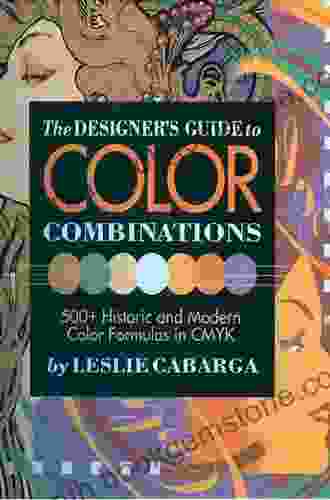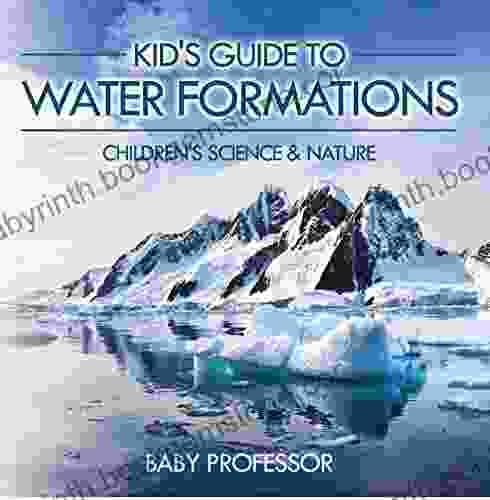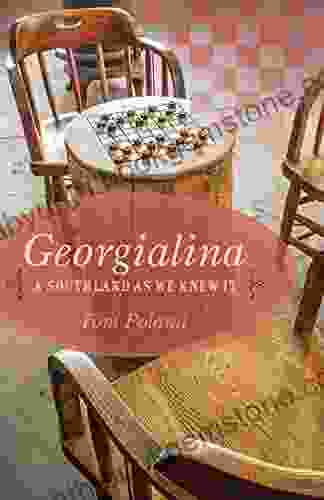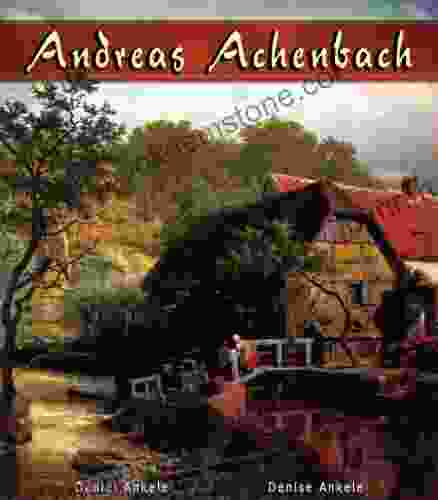The Designer Guide to Color Combinations

Color is one of the most powerful tools a designer has at their disposal. It can be used to evoke emotions, create visual interest, and communicate messages. But choosing the right color combinations can be a daunting task. With so many colors to choose from, it can be hard to know where to start.
This guide will provide you with everything you need to know about color combinations, from the basics of color theory to advanced techniques for creating stunning designs. By the end of this guide, you'll be able to confidently choose and combine colors to create designs that are both visually appealing and effective.
Before we dive into specific color combinations, let's take a quick look at the basics of color theory. Color theory is the study of how colors interact with each other. It can be used to create harmonious color schemes and avoid clashing colors.
4.1 out of 5
| Language | : | English |
| File size | : | 19156 KB |
| Text-to-Speech | : | Enabled |
| Screen Reader | : | Supported |
| Enhanced typesetting | : | Enabled |
| Print length | : | 152 pages |
The color wheel is a valuable tool for understanding color theory. The color wheel is a circular diagram that shows the relationships between different colors. The primary colors are red, yellow, and blue. The secondary colors are green, orange, and purple. The tertiary colors are the colors that are created by mixing a primary color with a secondary color.
The color wheel can be used to create a variety of color schemes. Complementary colors are colors that are opposite each other on the color wheel. They create a high-contrast effect that can be visually striking. Analogous colors are colors that are adjacent to each other on the color wheel. They create a harmonious effect that is often pleasing to the eye. Triadic colors are colors that are evenly spaced around the color wheel. They create a balanced and sophisticated effect.
Color harmony is the key to creating successful color combinations. Color harmony occurs when colors work together to create a visually pleasing effect. There are a few different factors that contribute to color harmony, including:
- Hue: The hue of a color is its basic color, such as red, blue, or green.
- Saturation: The saturation of a color is its intensity, or how much of the pure color is present.
- Value: The value of a color is its lightness or darkness.
When choosing colors for a combination, it's important to consider the hue, saturation, and value of each color. Colors that are similar in hue, saturation, and value will create a harmonious effect. Colors that are контрастные in hue, saturation, or value will create a more dynamic effect.
A color scheme is a group of colors that are used together in a design. Color schemes can be created using a variety of methods, including:
- Monochromatic: A monochromatic color scheme uses different shades and tints of a single color.
- Analogous: An analogous color scheme uses colors that are adjacent to each other on the color wheel.
- Complementary: A complementary color scheme uses colors that are opposite each other on the color wheel.
- Triadic: A triadic color scheme uses colors that are evenly spaced around the color wheel.
- Split-complementary: A split-complementary color scheme uses one color and the two colors that are adjacent to its complement on the color wheel.
The choice of color scheme will depend on the desired effect of the design. Monochromatic color schemes create a unified and cohesive look. Analogous color schemes create a harmonious and pleasing effect. Complementary color schemes create a high-contrast effect that can be visually striking. Triadic color schemes create a balanced and sophisticated effect. Split-complementary color schemes create a dynamic and interesting effect.
Once you have a basic understanding of color theory and color harmony, you can start to experiment with more advanced color techniques. These techniques can be used to create unique and visually stunning designs.
Some of the most common advanced color techniques include:
- Color blending: Color blending is the process of mixing two or more colors together to create a new color. Color blending can be used to create smooth transitions between colors or to create new and unique colors.
- Color gradients: A color gradient is a series of colors that blend together smoothly from one color to another. Color gradients can be used to create a variety of effects, such as depth, movement, and texture.
- Color overlays: A color overlay is a transparent layer of color that is placed over another color. Color overlays can be used to change the hue, saturation, or value of a color. They can also be used to create special effects, such as shadows and highlights.
- Color filters: A color filter is a transparent layer of color that is placed over an image. Color filters can be used to change the overall color of an image or to create special effects, such as sepia or black and white.
Advanced color techniques can be used to create a wide variety of unique and visually stunning designs. Experiment with these techniques to find out what works best for you and your design style.
Color is a powerful tool that can be used to create stunning designs. By understanding the basics of color theory and color harmony, you can choose and combine colors to create designs that are both visually appealing and effective. Experiment with advanced color techniques to create unique and visually stunning designs.
4.1 out of 5
| Language | : | English |
| File size | : | 19156 KB |
| Text-to-Speech | : | Enabled |
| Screen Reader | : | Supported |
| Enhanced typesetting | : | Enabled |
| Print length | : | 152 pages |
Do you want to contribute by writing guest posts on this blog?
Please contact us and send us a resume of previous articles that you have written.
 Best Book
Best Book Page Flip
Page Flip Bookshelf
Bookshelf Literary loom
Literary loom Chapter
Chapter Bookish
Bookish PageTurner
PageTurner Bibliophile
Bibliophile Story
Story Inkwell
Inkwell Bookworm
Bookworm Labyrinth
Labyrinth Plot Twist
Plot Twist Prose
Prose Paperback
Paperback Storyteller
Storyteller Sanctuary
Sanctuary Fiction
Fiction Reading
Reading Chronicle
Chronicle Read
Read Lina Rather
Lina Rather Dan Grunfeld
Dan Grunfeld Craig A Falconer
Craig A Falconer Ann Fessler
Ann Fessler Cynthia Royce
Cynthia Royce Irene Aylworth Douglass
Irene Aylworth Douglass Craig W Stanfill
Craig W Stanfill Ronald G Knapp
Ronald G Knapp Joy Deja King
Joy Deja King Chris Strodder
Chris Strodder Gianrico Carofiglio
Gianrico Carofiglio John Humphries
John Humphries Danielle Krysa
Danielle Krysa T D Lake
T D Lake Marie Brennan
Marie Brennan Collins Dictionaries
Collins Dictionaries James Seabright
James Seabright J J Green
J J Green Terry Darlington
Terry Darlington John Parascandola
John Parascandola Siri Hustvedt
Siri Hustvedt Liza Rodman
Liza Rodman Joan Didion
Joan Didion Nick Lyons
Nick Lyons Jason Cochran
Jason Cochran J Z Foster
J Z Foster Dick J Reavis
Dick J Reavis Karen Swan
Karen Swan Isabella Maldonado
Isabella Maldonado Steven Collins
Steven Collins Tana Stone
Tana Stone Niall Teasdale
Niall Teasdale Susan Cross
Susan Cross Fethi Mansouri
Fethi Mansouri Kenya Clark
Kenya Clark Henning Nelms
Henning Nelms Colson Whitehead
Colson Whitehead Craig Johnson
Craig Johnson Frank Bruni
Frank Bruni Amaya Black
Amaya Black Ronald Pratt
Ronald Pratt Beverly Jenkins
Beverly Jenkins Susan Yeates
Susan Yeates Kristina Evans
Kristina Evans Dk Eyewitness
Dk Eyewitness Margaret Coker
Margaret Coker Jeanne Farr Mcdonnell
Jeanne Farr Mcdonnell Eva Heller
Eva Heller Dan Sugralinov
Dan Sugralinov Joshua T Calvert
Joshua T Calvert Robert De La Sizeranne
Robert De La Sizeranne Dennis Lehane
Dennis Lehane Pearl Tate
Pearl Tate Deanna Amodeo
Deanna Amodeo Crypto Dukedom
Crypto Dukedom Karolyn Kiisel
Karolyn Kiisel Marie Killilea
Marie Killilea Mark Bourrie
Mark Bourrie Eric Jerome Dickey
Eric Jerome Dickey Roy Kinnard
Roy Kinnard George Saunders
George Saunders Yutaka Yazawa
Yutaka Yazawa Minal Hajratwala
Minal Hajratwala Lorne Ryburn
Lorne Ryburn Dave Willmarth
Dave Willmarth Fiona Davis
Fiona Davis Ward Larsen
Ward Larsen Crispin Sartwell
Crispin Sartwell J A Johnstone
J A Johnstone Sean Egan
Sean Egan Peter Parnell
Peter Parnell Maggie Rowe
Maggie Rowe Jeffrey Alford
Jeffrey Alford Mike Katz
Mike Katz Eat Like A Local
Eat Like A Local Nigel Barley
Nigel Barley Mary Paik Lee
Mary Paik Lee Gerald Everett Jones
Gerald Everett Jones Les Standiford
Les Standiford Jordan Matter
Jordan Matter Roy Simmons
Roy Simmons Jon Breakfield
Jon Breakfield Jane Sutcliffe
Jane Sutcliffe Corky Parker
Corky Parker Cliff Mass
Cliff Mass Grace Goodwin
Grace Goodwin L E Modesitt Jr
L E Modesitt Jr R P Jones
R P Jones Leila Guerriero
Leila Guerriero Damion Hunter
Damion Hunter John Dennehy
John Dennehy Dana Sachs
Dana Sachs Cookie Mueller
Cookie Mueller James Rubik
James Rubik Nelson Demille
Nelson Demille Yelapa Memo
Yelapa Memo Megan Lynch
Megan Lynch Nawoko
Nawoko Mancho Soto
Mancho Soto Craig Ferguson
Craig Ferguson Mary Boone
Mary Boone Hal Vaughan
Hal Vaughan Peter Hanson
Peter Hanson Domnica Radulescu
Domnica Radulescu Karl Johnson
Karl Johnson Maham Johnson
Maham Johnson Michelle L Hardy
Michelle L Hardy Massimiliano Musina
Massimiliano Musina Cornelius C Kubler
Cornelius C Kubler William Schoell
William Schoell Peter Ninnes
Peter Ninnes Richard K Morgan
Richard K Morgan Jeff Tanyard
Jeff Tanyard Margaret Fletcher
Margaret Fletcher Henry Koster
Henry Koster Coert Voorhees
Coert Voorhees Jaclyn Bailie
Jaclyn Bailie Edward Johnston
Edward Johnston Taylor Fuller
Taylor Fuller Ian Frazier
Ian Frazier Jennifer M Eaton
Jennifer M Eaton Jay C Labarge
Jay C Labarge Colin Jones
Colin Jones Robert Appleton
Robert Appleton Tim Judah
Tim Judah Susan Linden Emde
Susan Linden Emde Cynthia Leal Massey
Cynthia Leal Massey Donna Zakowska
Donna Zakowska Jennifer Thompson Cannino
Jennifer Thompson Cannino Twyla Tharp
Twyla Tharp Daniel L Bray
Daniel L Bray Deborah Davis
Deborah Davis Marya Hornbacher
Marya Hornbacher Synithia Williams
Synithia Williams Harold P Howard
Harold P Howard John Grisham
John Grisham Frances Dinkelspiel
Frances Dinkelspiel Michael Reardon
Michael Reardon Criss Angel
Criss Angel Culture Smart
Culture Smart Gina Mckinnon
Gina Mckinnon Kristina Mcmorris
Kristina Mcmorris Coryn Anaya Clarke
Coryn Anaya Clarke Luca Turin
Luca Turin Marius Kociejowski
Marius Kociejowski Jessica Kerwin Jenkins
Jessica Kerwin Jenkins James Alan Gardner
James Alan Gardner D J Holmes
D J Holmes Scott Moon
Scott Moon Danny Trejo
Danny Trejo Cornelius N Grove
Cornelius N Grove William Evans
William Evans Craig Mod
Craig Mod Gael Berton
Gael Berton David W Galenson
David W Galenson Stephen Brooks
Stephen Brooks Meredith Little
Meredith Little Karen Mcnally
Karen Mcnally Clyde D Souza
Clyde D Souza Laura Donnelly Bethmann
Laura Donnelly Bethmann Rami Yelda
Rami Yelda Wyclef Jean
Wyclef Jean Ian Whitaker
Ian Whitaker Theo Dorgan
Theo Dorgan Baby Professor
Baby Professor Olivia Campbell
Olivia Campbell C F Jernigan
C F Jernigan Virginia Matheson Hooker
Virginia Matheson Hooker Irving Layton
Irving Layton Crystal Allen
Crystal Allen Dan Zehr
Dan Zehr Philip Simmons
Philip Simmons Brandon Q Morris
Brandon Q Morris Cody Whitfill
Cody Whitfill Joy Castro
Joy Castro Garry Mcgee
Garry Mcgee Jeremy Kroeker
Jeremy Kroeker T R Napper
T R Napper Hannah Strong
Hannah Strong Joan D Vinge
Joan D Vinge Sean Hartlieb
Sean Hartlieb Cyril W Beaumont
Cyril W Beaumont Sasha Duerr
Sasha Duerr D K Pike
D K Pike Coryne Hall
Coryne Hall Nancy Marchant
Nancy Marchant Insun Lee
Insun Lee L A Braun
L A Braun Yair Lapid
Yair Lapid Matthew Quirk
Matthew Quirk Curatoria Draconis
Curatoria Draconis Clive Cussler
Clive Cussler Craig Seymour
Craig Seymour Robert E Innis
Robert E Innis Dr Quinta
Dr Quinta Diane Cardaci
Diane Cardaci Rayna Tyler
Rayna Tyler Zeena Shah
Zeena Shah D Scott Bowers
D Scott Bowers Fred Ladd
Fred Ladd Alexa West
Alexa West Euclides Da Cunha
Euclides Da Cunha Gabrielle Zevin
Gabrielle Zevin Kyle Widner
Kyle Widner Karen O Brien
Karen O Brien Joshua M Greene
Joshua M Greene Yunte Huang
Yunte Huang Clementina Oluchi Augustine
Clementina Oluchi Augustine Scott Kenemore
Scott Kenemore Olivia Dade
Olivia Dade Eleanor Ford
Eleanor Ford Danica Roem
Danica Roem Michelle Damiani
Michelle Damiani Gerry Virtue
Gerry Virtue Geoff Saunders
Geoff Saunders Elizabeth May
Elizabeth May Prince
Prince Mary Alice Monroe
Mary Alice Monroe Leonard S Marcus
Leonard S Marcus Dan X Solo
Dan X Solo John Baxter
John Baxter Emma Larkin
Emma Larkin Steve Huston
Steve Huston Tom Satterly
Tom Satterly Cp Mchugh
Cp Mchugh K C Jones
K C Jones Olan Thorensen
Olan Thorensen Connie Mcbride
Connie Mcbride Natasha Sims
Natasha Sims Lee Feigon
Lee Feigon Michael Henry
Michael Henry Reprint Edition Kindle Edition
Reprint Edition Kindle Edition Julie Lythcott Haims
Julie Lythcott Haims Dale Brown
Dale Brown David Bischoff
David Bischoff Carl Sagan
Carl Sagan Ella Barrick
Ella Barrick Harry Lorayne
Harry Lorayne Hyeonseo Lee
Hyeonseo Lee Pat Grillo
Pat Grillo Connie Willis
Connie Willis Lin Wellford
Lin Wellford Dan Popp
Dan Popp Cory Doctorow
Cory Doctorow P A Piatt
P A Piatt Laurent Dubois
Laurent Dubois Ernest J Gaines
Ernest J Gaines Cookie Johnson
Cookie Johnson Saad Z Hossain
Saad Z Hossain Mia Michaels
Mia Michaels James Rosenquist
James Rosenquist Diana Hollingsworth Gessler
Diana Hollingsworth Gessler Kevin J Anderson
Kevin J Anderson John Mcwade
John Mcwade Jacques D Amboise
Jacques D Amboise Steve Reifenberg
Steve Reifenberg Dakota James
Dakota James R Allen Chappell
R Allen Chappell Gerda Weissmann Klein
Gerda Weissmann Klein D Ward Cornell
D Ward Cornell True Kelley
True Kelley Dale Pollock
Dale Pollock David Mikics
David Mikics Lorraine Bartlett
Lorraine Bartlett Sara Wheeler
Sara Wheeler Daniel Ankele
Daniel Ankele Marisol Enchufa
Marisol Enchufa Tracy Lambert
Tracy Lambert Xinran
Xinran John Tanner
John Tanner T Scott Bryan
T Scott Bryan Andrew Patrick Nelson
Andrew Patrick Nelson Jennifer Brozek
Jennifer Brozek Rebecca Hardiman
Rebecca Hardiman Dan Gheno
Dan Gheno D K Holmberg
D K Holmberg Courtney Ragsdale
Courtney Ragsdale Richard East
Richard East Nicolas Lampert
Nicolas Lampert Nick Jans
Nick Jans Tim Vernooij
Tim Vernooij J C Romero
J C Romero Tracey Lange
Tracey Lange Nathan D Horowitz
Nathan D Horowitz Ingrid Sischy
Ingrid Sischy Jerry Brotton
Jerry Brotton Gina Yashere
Gina Yashere Karen Stocker
Karen Stocker David Kroese
David Kroese Brad Olsen
Brad Olsen Kristen Britain
Kristen Britain Neal Stephenson
Neal Stephenson Tom Poland
Tom Poland J Robert Kennedy
J Robert Kennedy James Patterson
James Patterson Monika Forsberg
Monika Forsberg Yoko Hatta
Yoko Hatta Max Allan Collins
Max Allan Collins Sue Tabashnik
Sue Tabashnik Cyrus Highsmith
Cyrus Highsmith Kirstin Dow
Kirstin Dow Cynthia Clampitt
Cynthia Clampitt Trenae
Trenae Co Spinhoven
Co Spinhoven Sheila Montilla
Sheila Montilla Leslie Cabarga
Leslie Cabarga Jeremy Ford
Jeremy Ford Explorer Publishing
Explorer Publishing Leah Gallo
Leah Gallo David Walton
David Walton Cornelius Tacitus
Cornelius Tacitus Piera Sonnino
Piera Sonnino Eddie Robson
Eddie Robson Dallas Shaw
Dallas Shaw Dan Bigley
Dan Bigley Clifford Irving
Clifford Irving Henry James
Henry James Tinia Montford
Tinia Montford Dan Abnett
Dan Abnett Jason M Hough
Jason M Hough Graham Wilson
Graham Wilson Janet Koplos
Janet Koplos Jim Hutchinson
Jim Hutchinson Diana Friel Mcgowin
Diana Friel Mcgowin Iris Apfel
Iris Apfel S M Anderson
S M Anderson Cristina Salat
Cristina Salat Gabrielle Selz
Gabrielle Selz Jeremy Robert Johnson
Jeremy Robert Johnson Norman Hathaway
Norman Hathaway Clive Johnson
Clive Johnson Julia Chiles
Julia Chiles Tom Geng
Tom Geng Issa Rae
Issa Rae Barrington Barber
Barrington Barber Melissa Stephenson
Melissa Stephenson Loretta Outwater Cox
Loretta Outwater Cox Ellie Taylor
Ellie Taylor Ursula K Le Guin
Ursula K Le Guin Pierre Alex Jeanty
Pierre Alex Jeanty Dalai Lama
Dalai Lama Joe Starita
Joe Starita T J S George
T J S George John Luther Adams
John Luther Adams Fiona Ferris
Fiona Ferris Porochista Khakpour
Porochista Khakpour Blair Polly
Blair Polly Sarah Thornton
Sarah Thornton Yuriko Saito
Yuriko Saito Robert Isenberg
Robert Isenberg Eric Musgrave
Eric Musgrave S A Snyder
S A Snyder Linda Riesenberg Fisler
Linda Riesenberg Fisler Tony Pike
Tony Pike Helen Armstrong
Helen Armstrong Dawn Turner Trice
Dawn Turner Trice Lan Sluder
Lan Sluder Sarena Ulibarri
Sarena Ulibarri Torre Deroche
Torre Deroche Myriam Gurba
Myriam Gurba Hayley Stone
Hayley Stone Thefirstdefier
Thefirstdefier Grady Hendrix
Grady Hendrix Terri Kozlowski
Terri Kozlowski Helen Augur
Helen Augur Xiaolu Guo
Xiaolu Guo Cricut Maker
Cricut Maker Kelly Gay
Kelly Gay Dana Facaros
Dana Facaros Sam Branson
Sam Branson David Drake
David Drake Jeromy Hopgood
Jeromy Hopgood Michelle Brown
Michelle Brown John Logan
John Logan Steven Skaggs
Steven Skaggs Mark Dawson
Mark Dawson Lisa Yaszek
Lisa Yaszek Lisanne Norman
Lisanne Norman Thaddeus Carhart
Thaddeus Carhart Bob Martin
Bob Martin Darren Critchley
Darren Critchley Douglas Century
Douglas Century Jon May
Jon May Connie Malamed
Connie Malamed Serena Gilbert
Serena Gilbert Jodi Picoult
Jodi Picoult Janet Catherine Berlo
Janet Catherine Berlo Tom Hill
Tom Hill Irene Levin Berman
Irene Levin Berman Jay Ryan
Jay Ryan Ketut Suasti
Ketut Suasti Love Belvin
Love Belvin Warren Murphy
Warren Murphy D Dauphinee
D Dauphinee Carrie Stuart Parks
Carrie Stuart Parks Stephen Armstrong
Stephen Armstrong Parvati Sharma
Parvati Sharma Sean Williams
Sean Williams Lisa Morton
Lisa Morton Eric Lax
Eric Lax Dan Fox
Dan Fox June Emerson
June Emerson Susan Hayes
Susan Hayes Coralie Bickford Smith
Coralie Bickford Smith Dallen J Timothy
Dallen J Timothy Bill Geist
Bill Geist Conn Iggulden
Conn Iggulden Faye Moskowitz
Faye Moskowitz Mia Black
Mia Black Yuri Ulengov
Yuri Ulengov Jessica Walstad
Jessica Walstad David E Wilkins
David E Wilkins Colin Thubron
Colin Thubron Ian Douglas
Ian Douglas Cyn Alexander
Cyn Alexander Nancey Cummings
Nancey Cummings William J Burns
William J Burns David Riley
David Riley Keith Recker
Keith Recker David Cousens
David Cousens Dani Dyer
Dani Dyer Dahlma Llanos Figueroa
Dahlma Llanos Figueroa Steve Biddle
Steve Biddle Craig Briggs
Craig Briggs Jane Hamilton
Jane Hamilton Daigo Murasaki
Daigo Murasaki Kathryn Mcmaster
Kathryn Mcmaster Ted Andrews
Ted Andrews Dale Robinson
Dale Robinson Ron Celano
Ron Celano Marko Kloos
Marko Kloos Donald Spoto
Donald Spoto Marcus Richardson
Marcus Richardson D J Bodden
D J Bodden Dennis Valder
Dennis Valder Karen Cheung
Karen Cheung Todd Geers
Todd Geers Douglas Preston
Douglas Preston Ernst Bergen
Ernst Bergen Daily Language Learning
Daily Language Learning Sue Monk Kidd
Sue Monk Kidd Kati Marton
Kati Marton Em Brown
Em Brown Pat Kramer
Pat Kramer Tony Rafael
Tony Rafael T J Clark
T J Clark Sara Ackerman
Sara Ackerman M R Forbes
M R Forbes Harvey J Kaye
Harvey J Kaye Robert Silverberg
Robert Silverberg Kate Moore
Kate Moore Maya Angelou
Maya Angelou W B Yeats
W B Yeats Jake Spicer
Jake Spicer Cynthia Newcomer Daniel
Cynthia Newcomer Daniel Hannah Hart
Hannah Hart Marc Canter
Marc Canter Grace Barrington Shaw
Grace Barrington Shaw Ben Ohmart
Ben Ohmart Thrive Language Audiobooks
Thrive Language Audiobooks Jerry Beck
Jerry Beck Colin Souness
Colin Souness Daniel Burleigh Parkhurst
Daniel Burleigh Parkhurst Craig Melvin
Craig Melvin Mark Cramer
Mark Cramer Sarah Culberson
Sarah Culberson Dakota Krout
Dakota Krout John Paul Brammer
John Paul Brammer Cristy C Road
Cristy C Road Nick Snelling
Nick Snelling Mitsuo Kure
Mitsuo Kure David Maraniss
David Maraniss Sujean Rim
Sujean Rim Gene Wolfe
Gene Wolfe Roberto Pedreira
Roberto Pedreira Elizabeth Reid
Elizabeth Reid Isadora Duncan
Isadora Duncan Sarah Jackson
Sarah Jackson Daniel Abraham
Daniel Abraham Donna Jackson Nakazawa
Donna Jackson Nakazawa V D Bucket
V D Bucket William Powers
William Powers Craig Carey
Craig Carey Craig Martelle
Craig Martelle Michael Shnayerson
Michael Shnayerson Eric Trueheart
Eric Trueheart Carlos M N Eire
Carlos M N Eire G B Edwards
G B Edwards Paula Giddings
Paula Giddings Luis Alberto Urrea
Luis Alberto Urrea Wade Motawi
Wade Motawi Marc Taro Holmes
Marc Taro Holmes Dan Diggles
Dan Diggles Colleen Hall
Colleen Hall Khadizhat Witt
Khadizhat Witt Cynthia Saltzman
Cynthia Saltzman Julissa Arce
Julissa Arce Tc Manning
Tc Manning Denise Hamilton
Denise Hamilton Dan Simmons
Dan Simmons Rory Miller
Rory Miller David G Hartwell
David G Hartwell Stephen Kinzer
Stephen Kinzer Cora Tesheira
Cora Tesheira Victor Villasenor
Victor Villasenor Clayton Thomas Muller
Clayton Thomas Muller Sandee Cohen
Sandee Cohen Cristela Alonzo
Cristela Alonzo
Light bulbAdvertise smarter! Our strategic ad space ensures maximum exposure. Reserve your spot today!

 Harrison BlairLet's Look at Cuba: A Comprehensive Guide to the Enchanting Caribbean Island
Harrison BlairLet's Look at Cuba: A Comprehensive Guide to the Enchanting Caribbean Island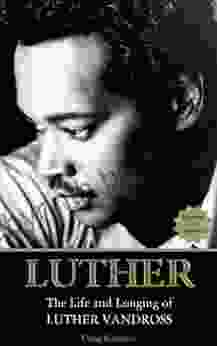
 Jett PowellThe Life and Longing of Luther Vandross: A Musical Odyssey of Love, Loss, and...
Jett PowellThe Life and Longing of Luther Vandross: A Musical Odyssey of Love, Loss, and... Timothy WardFollow ·10k
Timothy WardFollow ·10k Adam HayesFollow ·8.3k
Adam HayesFollow ·8.3k Chase MorrisFollow ·8.9k
Chase MorrisFollow ·8.9k Terence NelsonFollow ·14.4k
Terence NelsonFollow ·14.4k Neal WardFollow ·14.3k
Neal WardFollow ·14.3k Dustin RichardsonFollow ·13k
Dustin RichardsonFollow ·13k Davion PowellFollow ·17.4k
Davion PowellFollow ·17.4k Herman MitchellFollow ·9.2k
Herman MitchellFollow ·9.2k
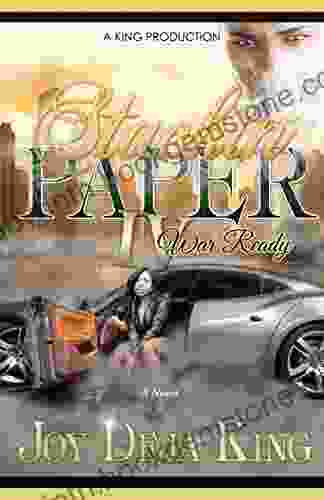
 Billy Peterson
Billy PetersonStackin' Paper Part War Ready: A Comprehensive Guide to...
In today's competitive financial landscape,...
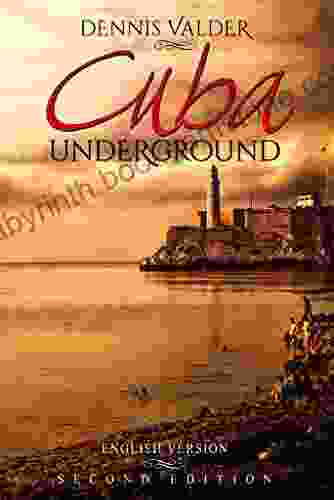
 Jedidiah Hayes
Jedidiah HayesDennis Valder: Unveiling the Enchanting World of Cuba's...
In the heart...

 Ryan Foster
Ryan FosterDelving into the Captivating Enigma of The Green Season...
In the verdant tapestry of literary...
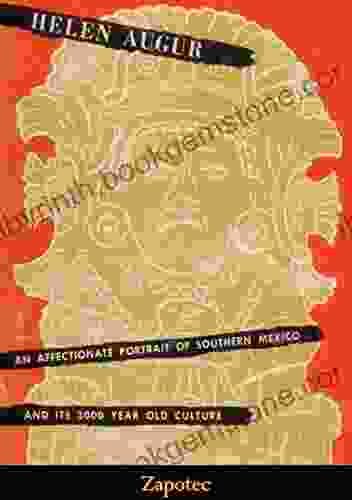
 Jeremy Mitchell
Jeremy MitchellZapotec Helen Augur: A Visionary Leader and Cultural...
In the heart of...
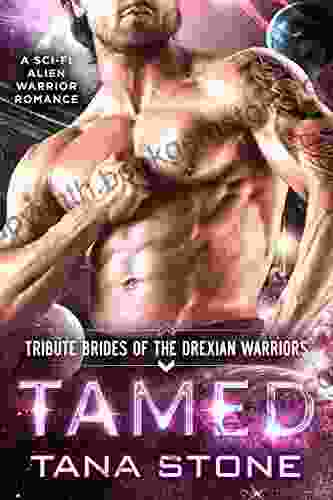
 Larry Reed
Larry ReedSci-Fi Alien Warrior Romance: A Tribute to the Brides of...
In the vast expanse of the...
4.1 out of 5
| Language | : | English |
| File size | : | 19156 KB |
| Text-to-Speech | : | Enabled |
| Screen Reader | : | Supported |
| Enhanced typesetting | : | Enabled |
| Print length | : | 152 pages |


